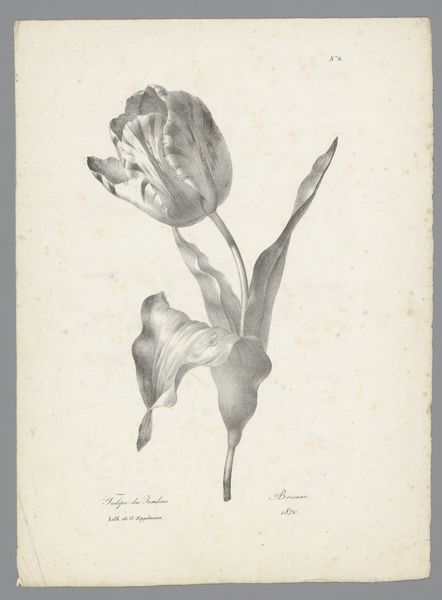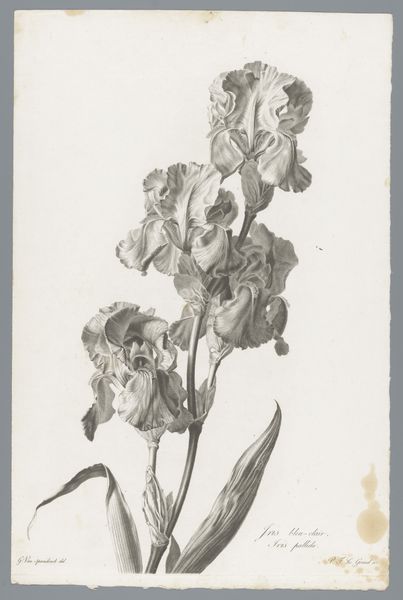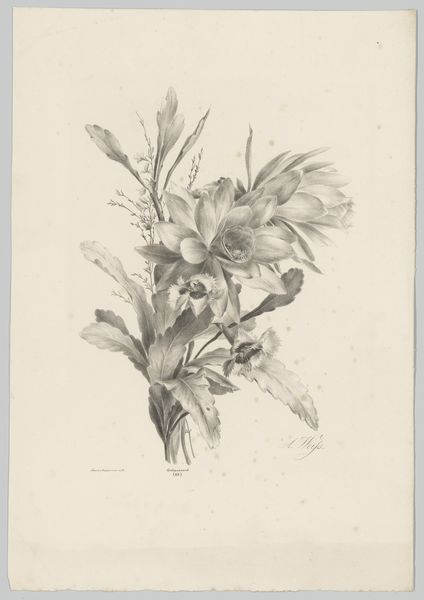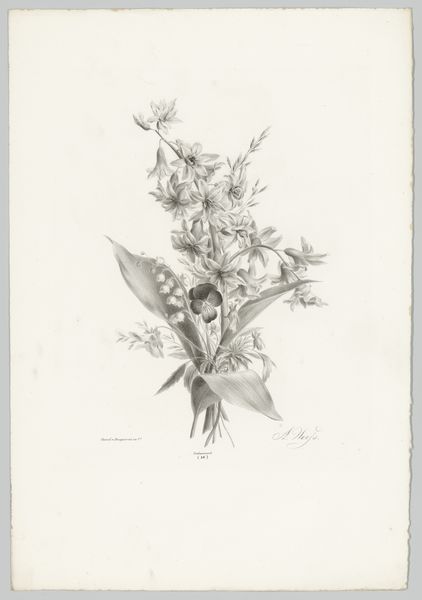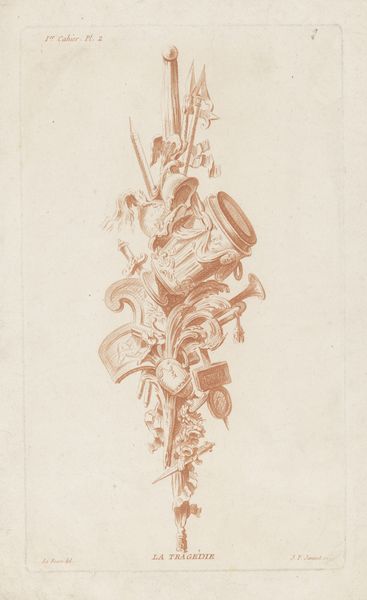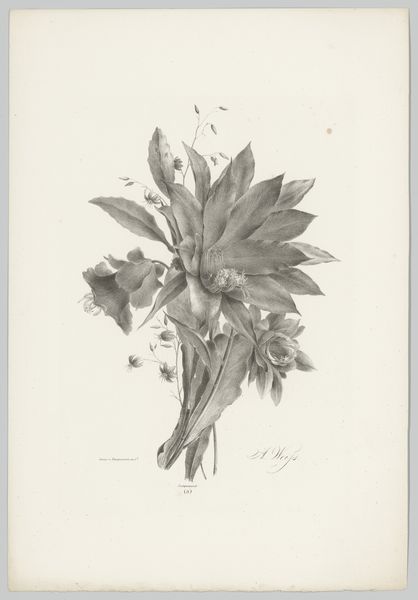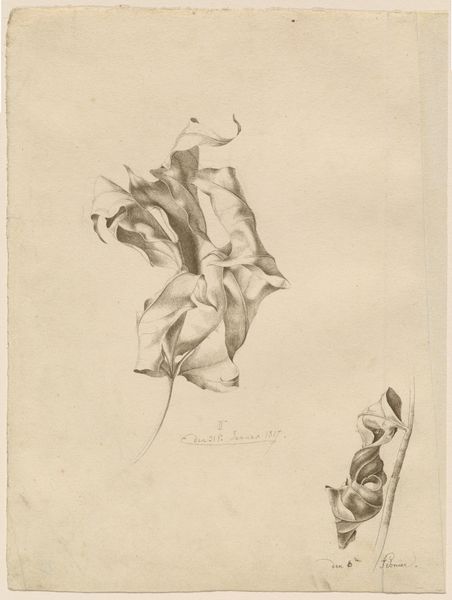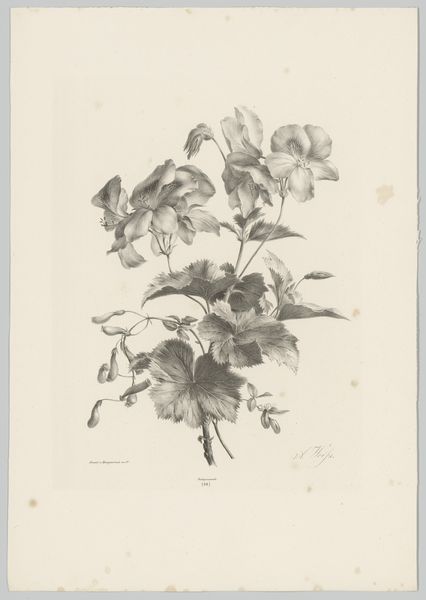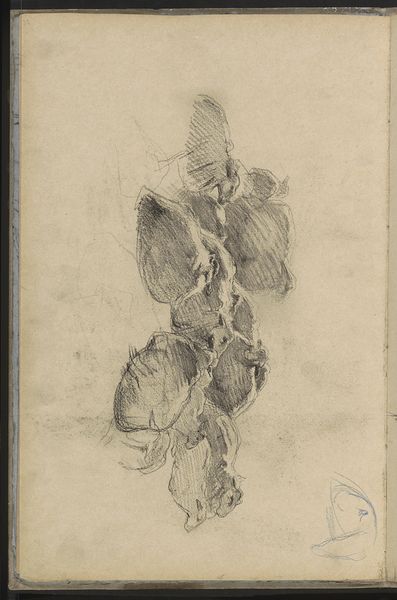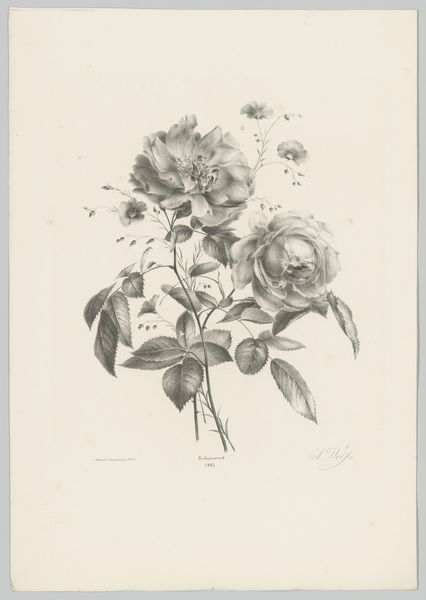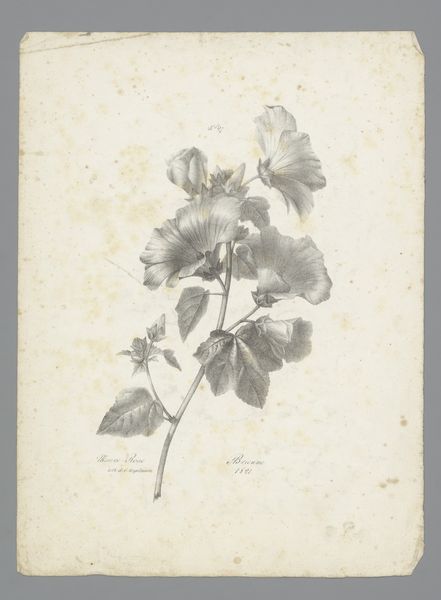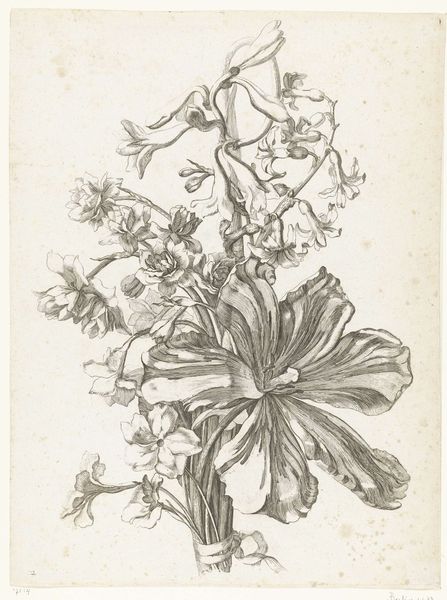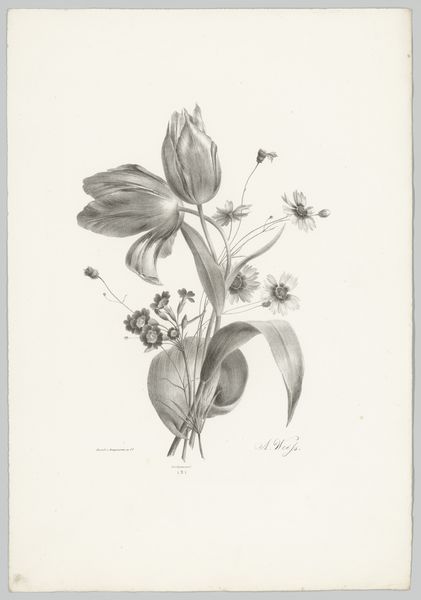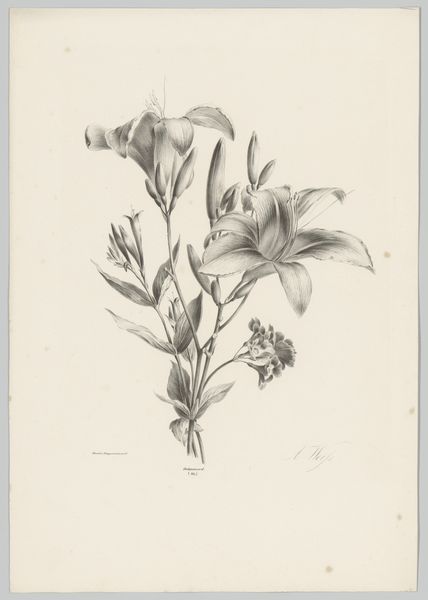
drawing, paper, pencil
#
drawing
#
paper
#
form
#
romanticism
#
pencil
#
line
#
naturalism
#
realism
Dimensions: height 365 mm, width 275 mm
Copyright: Rijks Museum: Open Domain
Editor: So, this is "Baardiris," a pencil drawing on paper created in 1822 by Auguste Piquet de Brienne. What I find immediately striking is how meticulously detailed it is for a seemingly simple botanical study. The artist captured the form and texture of the iris so realistically! What compositional elements stand out to you? Curator: The intrinsic value of this piece resides within the delicate balance of light and shadow. Observe how the artist has modulated the pencil strokes to create depth and volume, particularly in the petals. Notice the contrast between the detailed rendering of the flower and the relative emptiness of the background, further isolating the botanical form. It compels us to consider the materiality of the work—the deliberate manipulation of graphite on paper. Editor: Yes, the contrast is quite pronounced! Does the specific *type* of line work— the hatching and stippling— have meaning to your eyes, something beyond just representing texture? Curator: Indeed. The linear quality of the hatching lends a structural integrity to the piece, a kind of underlying architecture. Each stroke builds upon the others, defining form, simulating volume through tonal variations, and guiding the eye upward to consider both of the two iris blooms at slightly different perspectives. Editor: So, through line and form alone, the artist has created not just a beautiful drawing, but also a compelling, almost architectural structure, on paper. That's remarkable. Curator: Precisely. The essence resides within the visual language, independent of external references. By attending to the minute arrangement of the botanical figure in relationship to light and the paper’s void we begin to discover the potentiality for forms of expression available through rigorous formal technique. Editor: It’s interesting to think of such a “simple” subject allowing for so much complexity within. I learned a lot through this image.
Comments
No comments
Be the first to comment and join the conversation on the ultimate creative platform.
